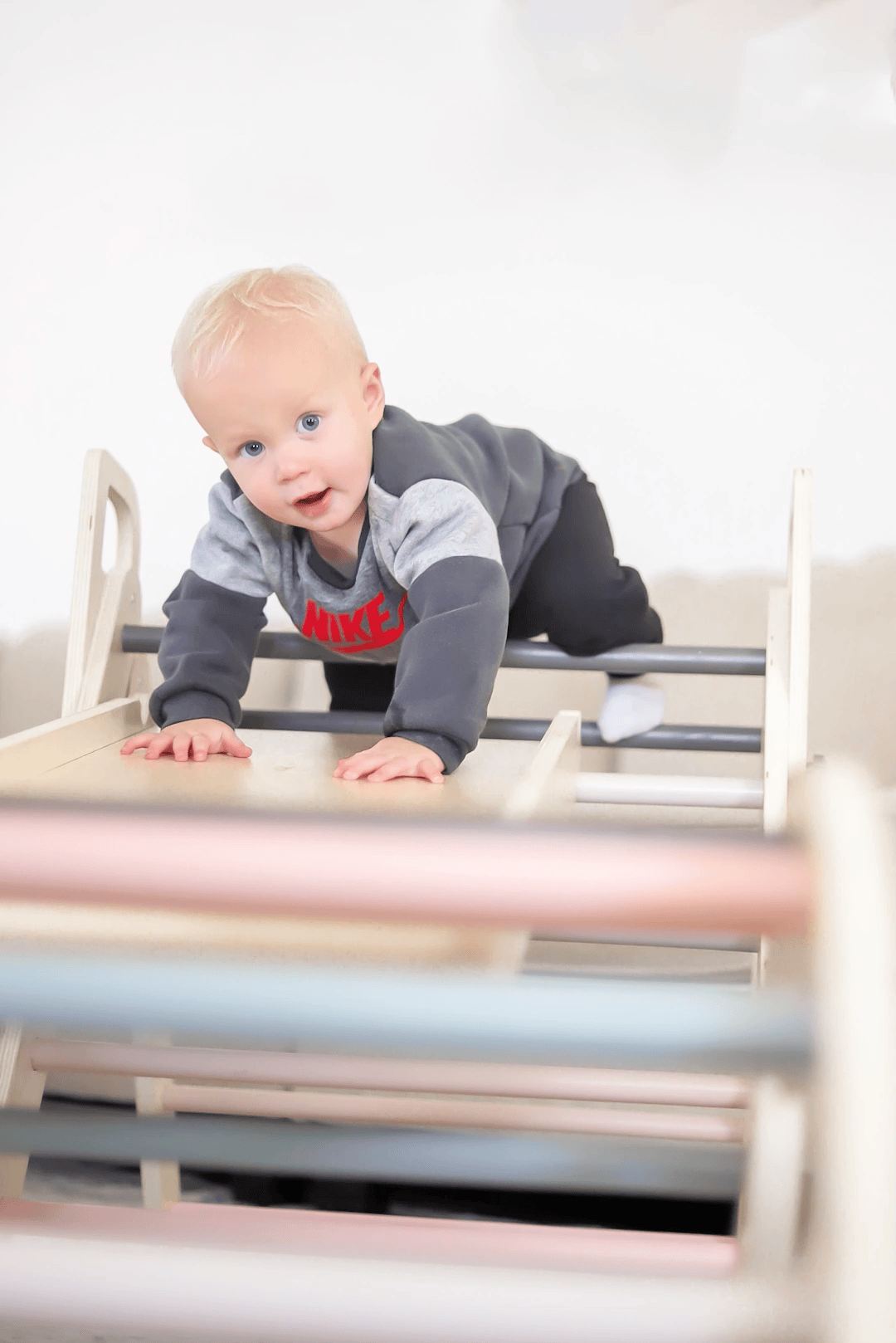Traditional Outdoor Play vs. Creative Exploration: How Sensory Play Sparks a Child’s Curiosity — A Montessori Approach to Nature Learning
“Does your child beg to go outside, only to get bored after ten minutes?”
It’s a struggle many parents know too well — you plan outdoor playtime hoping for joyful exploration, yet your child quickly loses interest and asks to go home. The real issue may not lie in being outdoors, but rather in how we guide children to experience the world.
The Montessori philosophy teaches that children are born with an “absorbent mind” — they learn best through hands-on, sensory experiences. When outdoor play is limited to running, swinging, and sliding, kids receive only one-dimensional stimulation. But when sensory exploration meets the natural world, the outdoors can transform into a living classroom that fuels curiosity and discovery.
The Limits of Traditional Outdoor Play: Why Kids “Don’t Play Deeply”
Most families associate outdoor time with playgrounds, swings, and slides. While these activities help children burn energy, they often miss two key elements:
1.Passive participation, not active discovery:
Structured play equipment tells children how to play, leaving little room for creative problem-solving or “what if” thinking. Their natural sense of curiosity slowly fades.
2.Limited sensory engagement:
Montessori emphasizes learning through all five senses — sight, sound, touch, smell, and taste. Yet typical playgrounds focus mainly on movement, neglecting the texture of soil, the scent of flowers, or the rustle of leaves. Without rich sensory details, the environment feels flat, and children disengage.
As Dr. Montessori wrote, “The child’s love for the environment grows from their sensitivity to its details.” When outdoor play lacks those details, it becomes just another activity instead of an invitation to explore.
Montessori-Inspired Exploration: The Power of Sensory Play
Following the Montessori principle of “Follow the child,” parents can transform outdoor time into open-ended discovery simply by offering the right materials and space.
1.Touch: The magic of dirt, sand, and water
In Montessori, tactile exploration forms the foundation of sensory learning. Outdoors, children can feel the damp earth, the texture of sand, or the veins of a leaf — building a natural understanding of texture and material.
-
Mud Kitchen: Provide wooden utensils and natural materials so kids can “cook” with mud, petals, and leaves. Mixing and molding strengthens fine motor skills while stimulating tactile learning.
-
Sand and water play: Let children scoop, pour, and observe how sand and water behave differently — an early, hands-on introduction to physical science.
Cr. @scarly_west
2.Smell and taste: Nature’s sensory memory
Montessori education recognizes that scent and taste are deeply tied to memory and emotion.
-
Encourage kids to collect and compare plants like mint, pine, or jasmine — crush them gently and describe the smell (“sharp,” “sweet,” or “earthy”).
-
When safe, taste edible plants or fruits such as wild strawberries or dandelion flowers to learn where food comes from.
3.Sight and sound: Discovering the small wonders around us
Montessori environments nurture attention to detail — something nature offers in abundance.
-
Color treasure hunt: Ask children to find natural objects of a specific color — a red berry, a yellow leaf, a blue flower.
-
Sound map: Have them close their eyes, listen to birds, wind, and footsteps, then draw or mark what they hear — a creative way to visualize sound and pattern.
The Parent’s Role: Guide, Not Instructor
In creative exploration, parents are encouraged to follow one of Montessori’s core principles — “minimal interference, maximum support.”
1.Prepare the right environment: Offer safe, natural materials (wood pieces, stones, pinecones) and resist the urge to structure every activity.
2.Observe and wait: When your child is deeply engaged, step back. Avoid interrupting with warnings like “That’s too dirty” or “Don’t touch that.”
3.Ask instead of answering: When your child asks a question, respond with “What do you think?” or “How could we find out?” to encourage critical thinking.
As Dr. Montessori said, “Education is not what the teacher gives; education is a natural process spontaneously carried out by the human individual.” A parent’s patience and trust give curiosity the space it needs to grow.
Extending the Experience: Tools for Montessori-Inspired Outdoor Play
To support creative exploration, tools should be both authentic and open-ended — allowing children to create their own experiences.
-
Mud Kitchen: Built from natural wood with a working tap, blackboard, and storage shelves, it lets kids blend dirt, water, and leaves as they “cook.” Every stir and pour engages multiple senses while nurturing creativity.
-
Nature Exploration Kit: A small basket, magnifying glass, and notebook turn every walk into a science adventure — kids can collect samples, make drawings, and record discoveries.

Cr. @scarly_west
These tools aren’t just toys; they embody Montessori’s belief that “education is an aid to life.” By encouraging real, hands-on exploration, they nurture children’s curiosity and help them build a genuine connection with nature.
Conclusion: Turning the Outdoors into a “Montessori Classroom Without Walls”
When we bring Montessori’s sensory principles into outdoor play, the ordinary backyard transforms into a space for creative discovery. Children are no longer passive participants — through touch, smell, and sight, they construct their own understanding of the world.
As Montessori observed, “The child is our teacher.” They show us how to see the world anew.
So next time your little one begs to go outside, grab a bucket of soil and a few leaves — and let them lead. In that freedom to explore, curiosity finds its roots and learning grows naturally.
Let the outdoors be where your child’s senses awaken — and their curiosity grows freely in nature!

Deja un comentario